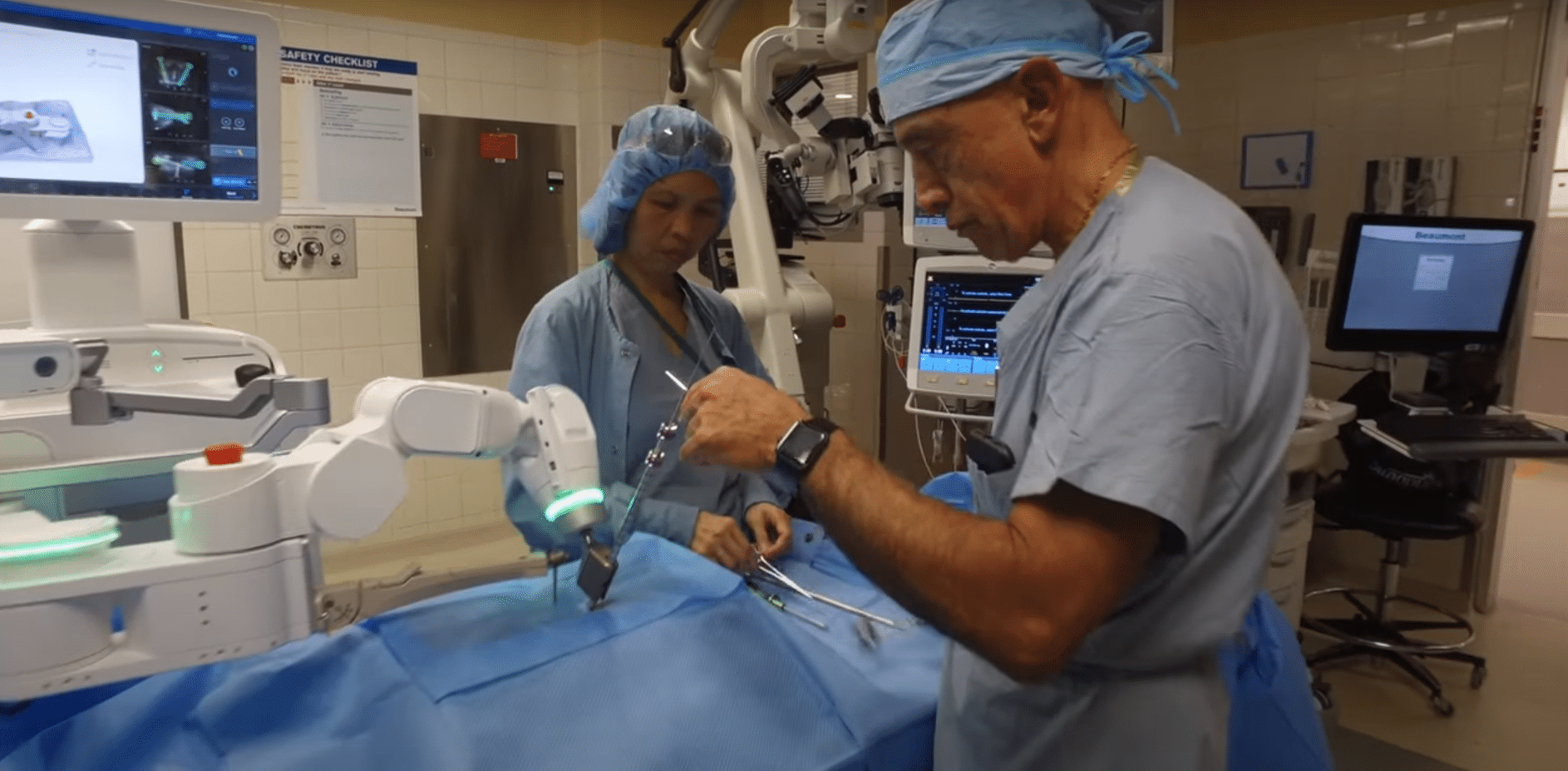In neurosurgery, robotic technology is primarily used for spine surgery. Per Dr. Fernando Diaz, the concept is similar to GPS technology in your car, where precision comes from planning the surgery ahead of time on a computer. The spine surgeon instructs the robot on the exact placement of instrumentation, and it then helps reproduce the planned surgical approach with stereotactic guidance.
Major Spine Surgery Robots in Use
These systems are designed to increase the precision and safety of spine surgeries, while reducing complications and recovery time for patients. Some of the major spine robots include:
Some of the major spine robots include:
- Mazor Robotics Renaissance and Mazor X: Mazor Robotics, which was acquired by Medtronic in 2018, developed the Renaissance and Mazor X systems. These robotic-assisted surgical systems are designed to assist surgeons in performing minimally invasive and complex spine surgeries with increased accuracy and reduced radiation exposure.
- Globus Medical ExcelsiusGPS: The ExcelsiusGPS system by Globus Medical is a robot-assisted platform for spine and neurosurgery. It integrates navigation, robotics, and intraoperative feedback to improve surgical accuracy and reduce radiation exposure to both the patient and surgical staff.
- Zimmer Biomet ROSA Spine: The ROSA Spine robot, developed by Zimmer Biomet, is designed for use in minimally invasive and complex spinal surgeries. This system combines 3D preoperative planning and intraoperative guidance, offering real-time feedback to enhance surgical precision.
In this video, Dr. Fernando Diaz discusses the benefits of surgical robots featuring the Mazor X.
Mazor X Surgical Robot Overview: Applications and Benefits
Neurosurgeons may utilize the Maser X robotic technology for various procedures, such as thoracic lumbar fusions, sacroiliac joint fusions, tumor treatment, and spine fracture repair. This advanced tool offers several benefits to our patients:
- Reduced radiation exposure: By limiting the use of X-rays, we dramatically decrease radiation exposure during surgery.
- Customized surgical plans: Each patient receives a tailored plan before entering the operating room, ensuring the most effective treatment.
- Increased accuracy and safety: The Mazor X technology allows for precise instrument placement, reducing the risk of complications.
- Shorter surgery duration: With the help of robotic assistance, spine surgeries can be completed more quickly.
- Reduced potential complications: The precise placement of surgical instruments minimizes the chances of misplacement and related issues.
Surgical robotic technology may significantly improve spine surgery patient outcomes by providing benefits, such as reduced radiation exposure, customized surgical plans, increased accuracy, and safety. If you have any questions about this technology, please discuss them with your surgeon.
